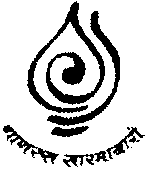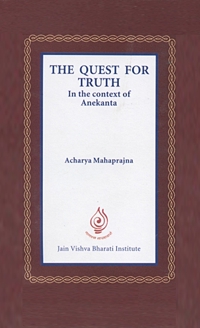
If this world were advaitic (monistic) - there would be only one reality. Then there would be no discussion on independence and dependence. This world has many realities. They influence each other. They have a cause and effect relationship also. Under such circumstances, a discussion on dependence and independence becomes necessary. The second aspect is that every aspect of reality is changeable. Change is intrinsic to reality. Change occurs at every instant of time. Time, defined by the sun and the moon, is not uniform. The time that is intrinsic to reality and becomes the stimulus for change is multidimensional. It is an internal mode of reality.
It is always on the move. Its pace keeps even reality on the move. It is not blocked anytime or anywhere. It is natural for reality that is bound in the inevitable chain of changes, to explore the ideas of dependence and independence. That which is bound by a certain cause and effect relationship cannot be independent. That which is associated with change as an inevitable component cannot be independent. Man is bound by such a relationship, he cannot even break through the pace of time, how can he be independent? Is he then dependent? Nothing can be fully dependent. If some aspect is dependent, some other will be independent and also conversely so. The existence of one argument cannot be proved without the establishing the existence of its opposing argument.
That man is dependent means he is independent too. Independence and dependence can be explained in terms of relativity. From the absolute point of view nothing is entirely dependent or independent. Mahavira explained the world in terms of two Perspectives (naya), the transcendental viewpoint (nischaya naya) and the empirical viewpoint (vyavahara naya). According to nischaya naya every object is seen in its intrinsic form. There is no substratum or substance. No cause, no effect. No creator, no creation. Whatever is, is its intrinsic form. This is an ontological definition. On the other hand the vyavahara naya deals with its elaboration. Within its ambit lie the relationships between the substratum and the substance, cause and effect, creator and the creation. It is here that a definition of dependent and independent can also be attempted.
Two schools of thinkers have attempted to define independence. The religious thinkers interpret independence as freedom from inner influences (passions which destroy the soul's attributes). Thinkers who have reflected upon the idea in terms of governance interpret it as freedom from external influences (imperfect organizational procedures).
Dharma is an exposition of the entire reality and its norms. So its purview is not limited to man alone but to the organization of entire reality. Governance deals with organizational norms and so it’s bearing is on inter-personal relationships and the Constitution.
Indian seers and philosophers have concentrated primarily on a dharmic interpretation of independence. One reason for this could be that they did not want to mix the common rules of governance with the eternal rules of dharma. On the basis of their definition of dharmic or eternal independence they tried to influence independence in governance but did not frame any separate guidelines for them. The authors of smriti and purana texts have however dealt with independence in the context of governance. They placed a lot of importance on intrinsic individual freedom.
 Acharya Mahaprajna
Acharya Mahaprajna


